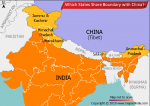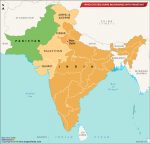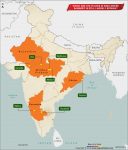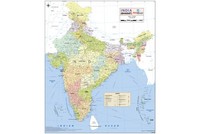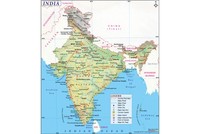“Not to have seen the cinema of Ray means existing in a world without seeing the sun or the moon.” — Akira Kurosawa
It was a tribute from one artiste to another, both giants of cinema. Their styles of filmmaking were quite different, but just like the Japanese genius is regarded by many critics as the greatest film director from his country, the position of Satyajit Ray—even more than two decades after his death on 23 April 1992—as India’s leading filmmaker stands.
In fact, together with filmmakers like Kurosawa, Ingmar Bergman and Jean-Luc Godard, Satyajit Ray was one of the greatest auteurs among post-war directors. But what makes Ray stand out even among his illustrious peers is that besides being the creator of several masterpieces of cinema, he was, among other things, a very popular writer of children’s fiction, a graphic artist who invented typefaces, and a music composer equally at ease with Western and Hindustani classical music.
Satyajit Ray was born on 2 May 1921 in Calcutta. Genius—or at any rate, exceptional creative talent—ran in the family. While his grandfather, Upendrakishore, dabbled in everything from writing and publishing to astronomy and philosophy, father Sukumar was an illustrator who wrote nonsense rhymes in Bengali for children, the likes of which Bengalis had not seen before.
Sukumar died when Ray was very young.
Ray took to sketching as a boy and got interested in Western classical music as a teenager. After his schooling, he studied economics at Calcutta’s prestigious Presidency College, but he did not find college particularly interesting. He later enrolled at poet Rabindranath Tagore’s Visva-Bharati University in Shantiniketan. Among the teachers who influenced him here were the painters Nandalal Bose and Benode Behari Mukherjee (Ray later made a documentary on the latter).
Though Ray, who missed the energy of Calcutta while living in rural Bengal, had an ambivalent relationship with Shantiniketan, it nourished him in various ways. Speaking with characteristic eloquence years later about his time there, he said: “It was a world of vast open spaces, vaulted over with a dustless sky, that on a clear night showed the constellations as no city sky could ever do. . . . If Shantiniketan did nothing else, it induced contemplation, and a sense of wonder, in the most prosaic and earthbound of minds.”
A stunning debut
Ray took up an artist’s job with a British ad firm in Calcutta in 1943. While he was in advertising for about a decade, he began to develop a deep interest in cinema, and would catch screenings of Hollywood films and world cinema. He was one of the founders of the Calcutta Film Society, the first such society in the city.
He married Bijoya Das, a cousin, in 1949.
During a work-related trip to London, Ray saw dozens of films, among them the famous Bicycle Thieves (1948) by the Italian neo-realist director Vittorio De Sica. Bicycle Thieves convinced Ray that he too should become a filmmaker. And the film he had in mind was based on a novel by the prominent Bengali writer Bibhutibhushan Bandyopadhyay. But shooting the film was not easy. Money was hard to come by. Ray had to pawn his wife’s jewellery. Shooting was stopped for a year for want of funds. But when it was released in 1955, Pather Panchali proved to be one of the most stunning debuts in the history of cinema.
Its story has the simplest of arcs: a poor family in a Bengali village struggles to live with dignity as death and poverty stalk it. But the countless little moments—Durga and her little brother Apu excitedly discovering a train for the first time; the magic of the first monsoon rains in the rural hinterland; the heart-breaking death of an old aunt next to a tree—that Ray captured on the camera, made it a deeply felt poetic vision. Nothing in the previous decades of Indian cinema had come remotely close to this on the screen.
The world took notice. Pather Panchali, famously, won the award for the ‘Best Human Document’ at the prestigious Cannes film festival in France, among numerous such accolades. After viewing Pather Panchali for the first time, the Times of India journalist Sham Lal, who later became the newspaper’s editor, wrote in 1956: “The primacy of the image does not entirely explain the power of the picture. . . . [Ray] has an uncanny eye for the scene and for the people. He composes his shots with a virtuosity which he shares with only a few directors in the history of the cinema. . . . [But the real] secret of his power lies in the felicity with which he gets under the skin of his characters and fixes what is in their mind and in their heart. . . .”
Ray went on to make two sequels to Pather Panchali—Aparajito and Apur Sansar (The World of Apu)—both brilliant works, which confirmed his status as a world-class filmmaker. Together, the three films are called the Apu trilogy, and follow Apu as he grows older, gets an education and turns distant from his mother (in Aparajito), and experiences love and loss in marriage in Apur Sansar.
Apur Sansar saw the debut of the great Soumitra Chatterjee, who would go on to act in several Ray films. It was also the first film of actress Sharmila Tagore (who was only 14 years old at the time and played the role of Apu’s wife).
The international awards kept pouring in. Aparajito won the Golden Lion at the Venice Film Festival while Apur Sansar bagged the Best Original Film Award at the London Film Festival.
Explaining the Apu Triolgy from the perspective of a western film critic, Roger Ebert wrote in 2001: “It (the trilogy) is about a time, place and culture far removed from our own, and yet it connects directly and deeply with our human feelings. It is like a prayer, affirming that this is what the cinema can be, no matter how far in our cynicism we may stray.”
Beyond the World of Apu
Ray made several remarkable films in the 1950s and 1960s, including Jalsaghar (about a zamindar who can’t come to terms with the reality of the decline of his class); Devi (centred around the superstitious cult of the goddess in 19th century Bengal and how it destroys one respectable family); and Kanchenjungha (various members of an extended family face uncomfortable truths about their and others’ lives during a vacation on a hill station).
Ray himself considered the 1964 film Charulata, based on a novella by Tagore, to be his most perfect work.
“The world is rigid but feelings are organic, and only a filmmaker tapped into the emotionally revealing possibilities of the medium could have told Charulata in such a masterfully nuanced manner. . . . Though Charulata has been obscured in the Ray canon by a certain trilogy made at the outset of his career, it remains a singularly accomplished song to love, idealism, heartbreak and disillusionment,” Jay Antani wrote in the Slant magazine.
In the 1970s, Ray also turned his attention to contemporary Calcutta and made three films—Pratidwandi, Seemabaddha and Jana Aranya—that are sometimes called the Calcutta trilogy (though they are not directly linked).
He also made films for children, such as Goopy Gyne Bagha Byne and Sonar Kella, but they are equally enjoyable to watch for adults. Ray was a popular writer of detective, science fiction and other stories, and millions of Bengali children grew up reading his delightful tales. Like in his children’s films, many devoted readers of his fiction were, in fact, grown-ups.
His films of the 1980s, though interesting, lacked the vitality of his earlier work, partly because he had suffered a stroke and his mobility was restricted.
Among the countless awards Ray received were the Bharat Ratna and a lifetime Oscar. When Satyajit Ray died on 23 April 1992, Kolkata came out in mourning. Recalling the moment, the renowned writer Amitav Ghosh wrote in 2004: “The day of Satyajit Ray’s death was like none that Kolkata had ever seen before. . . . Next morning hundreds of thousands of people filed past his body, braving the intense heat. . . . I wandered the streets for hours that night, watching the silent crowds. . . . I was surprised by the depth of my own sense of loss. Yet I was conscious also of an immense sense of privilege, of gratitude, that having been born in Kolkata I had, in some small way, been endowed with a special entitlement to Ray’s universe. . . .”
Also on this day:
1858 — Pandita Ramabai, Indian social reformer, was born
1927 — Annapurna Devi, Hindustani classical musician, was born
1969 — Manoj Bajpai, Indian film actor, was born
Reference:
- Indian Realities in Bits and Pieces by Sham Lal
- The Apu Trilogy: Satyajit Ray and the Making of an Epic by Andrew Robinson
- Satyajit Ray’s website
- Wikipedia
WBSKA230414

